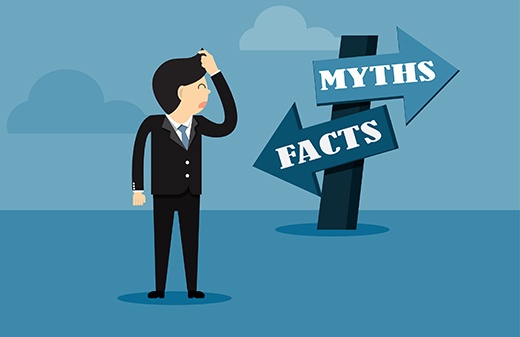With nutrition information everywhere, it can be hard to tell fact from fiction. Scientific breakthroughs happen from time to time, but they are very rarely “breakthrough” despite the sensational news headlines. Making sense of these exaggerated news bites can be difficult for most. In fact, the National Lipid Association, a well-respected organization of scientific professionals, just released their version of nutrition education materials1 to help healthcare providers help patients make better nutrition choices. This marks a significant step forward in combatting nutrition mythology and in helping healthcare professionals provide legitimate nutrition education to their patients.
I’ve always believed in the KISS principle (Keep It Simple Silly). There is lots of sound information out there that is well supported by research, but we also see a lot of not so great or even downright harmful information being passed around. Here are a few strategies I have shared with my clients over the years to help them detect the truth from the fiction:
- TRYING TO SELL YOU SOMETHING? — If the source (website, literature, etc.) is trying to sell you something, you should be extra cautious. While I am not saying “if it’s for sale, it’s not worth it,” you should be more hesitant about “science” that comes in the form of a sales pitch. It’s better to get your information from scientific sources that are not trying to sell something, and then find the best source from whom to buy the item if you decide to purchase. That said, if you are considering a product, make sure there is real research to back it up.
- CELEBRITY TESTIMONIALS — Just because an entertainment celebrity or athlete endorses something doesn’t mean it works or has supporting research. Most of these folks are paid to endorse products and some have never even tried the products they endorse.
- WHOM TO TRUST? – Non-profit member and research associations like the American Heart Association (https://www.heart.org/HEARTORG/), the National heart Lung and Blood Institute National (https://www.nhlbi.nih.gov/ ), and the American Cancer Society (https://www.cancer.org/) are all excellent sources of lifestyle information to promote good health and decrease disease risk.
I have heard “If it sounds too good to be true, it probably is,” and I think this is in part true. Dramatic weight loss and overnight health accomplishments are rarely achievable and instead require small but consistent lifestyle changes over time. That said, we don’t need to make it more complicated than it is. The principles of eating to maintain a healthy weight, and prevent disease are fairly simple and research tested – a portion appropriate, plant-dominant diet, with minimal artificial ingredients and processing, combined with a healthy dose of activity. One thing we do know is that if people are not able to follow a “diet,” their success with it will be poor. Lots of studies have shown that!
A few years ago a client came to me with an energetic debate about whether to eat non-fat yogurt with sugar or low-fat yogurt with artificial sweetener. Around and around we went, until I looked at her food log and saw a number of days featuring several cocktails and plates of nachos. Right there I developed the “fixer-upper-house” theory – you walk into a “fixer upper” and the walls are crumbling, the roof is caving in, and there are holes in the floor boards. Looking at this ambitious project, you ask, “What color should I paint the trim?” Far too often we get distracted by the small details, and end up ignoring the large areas in need of improvement, in this case the cocktails and nachos. There are probably several reasons for this, not the least important being that those big changes are sometimes really tough. Take home message? Toss out the “too good to be true,” but don’t overcomplicate the plan. Take on the changes that will make the most difference to your health, but divide them into manageable, meaningful, and actionable steps.
References:
